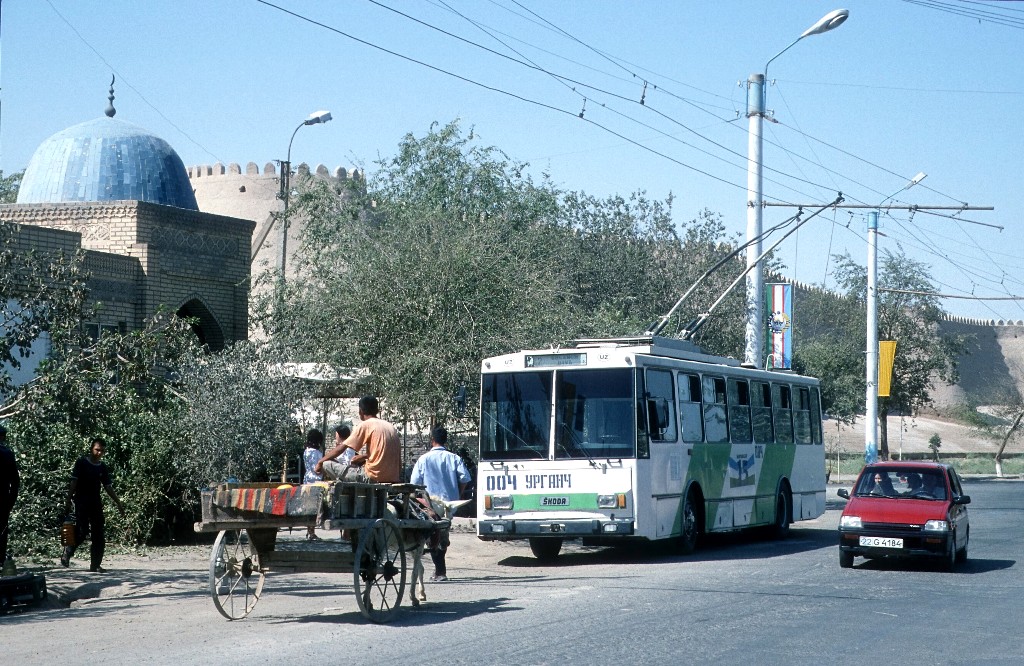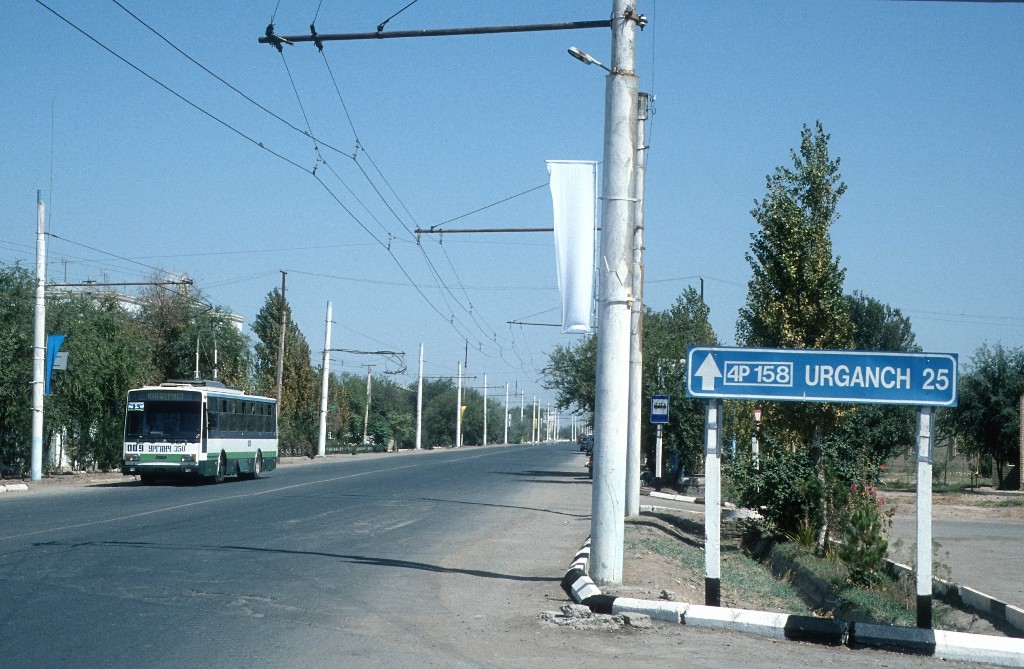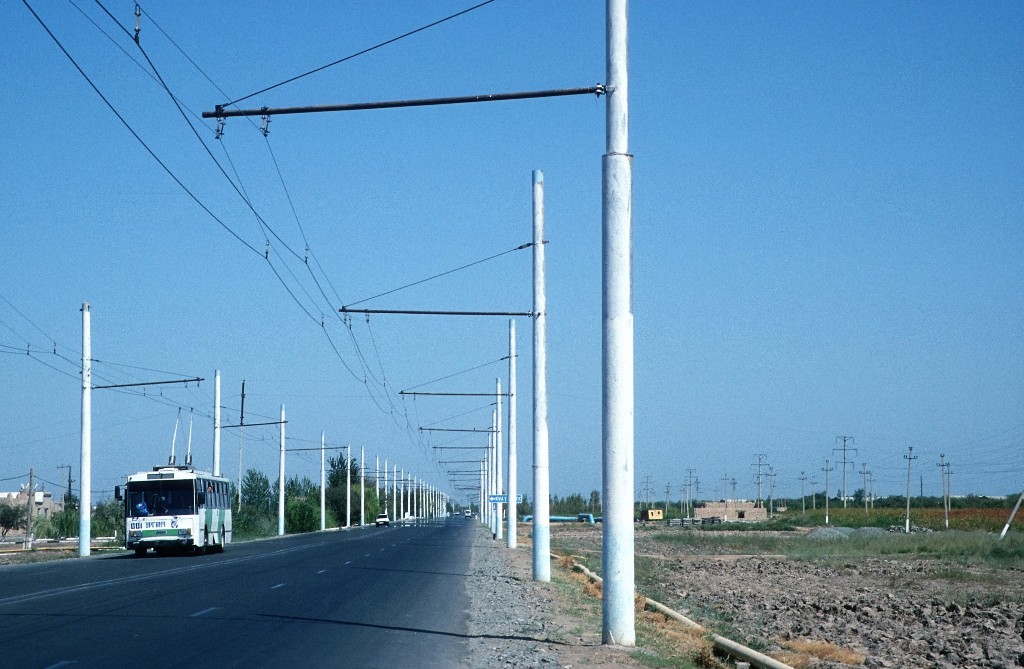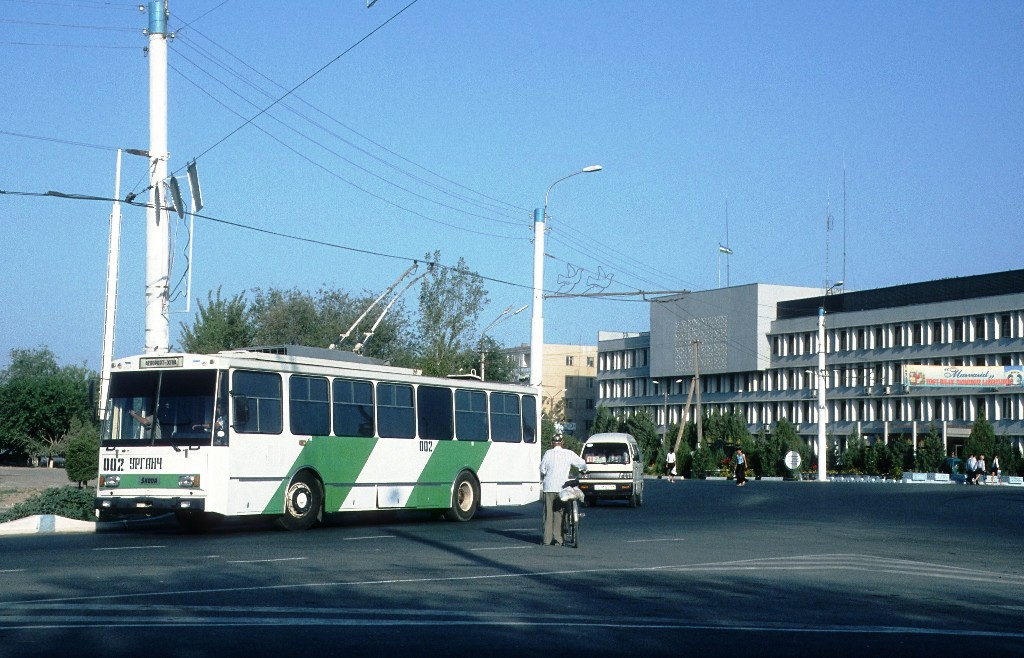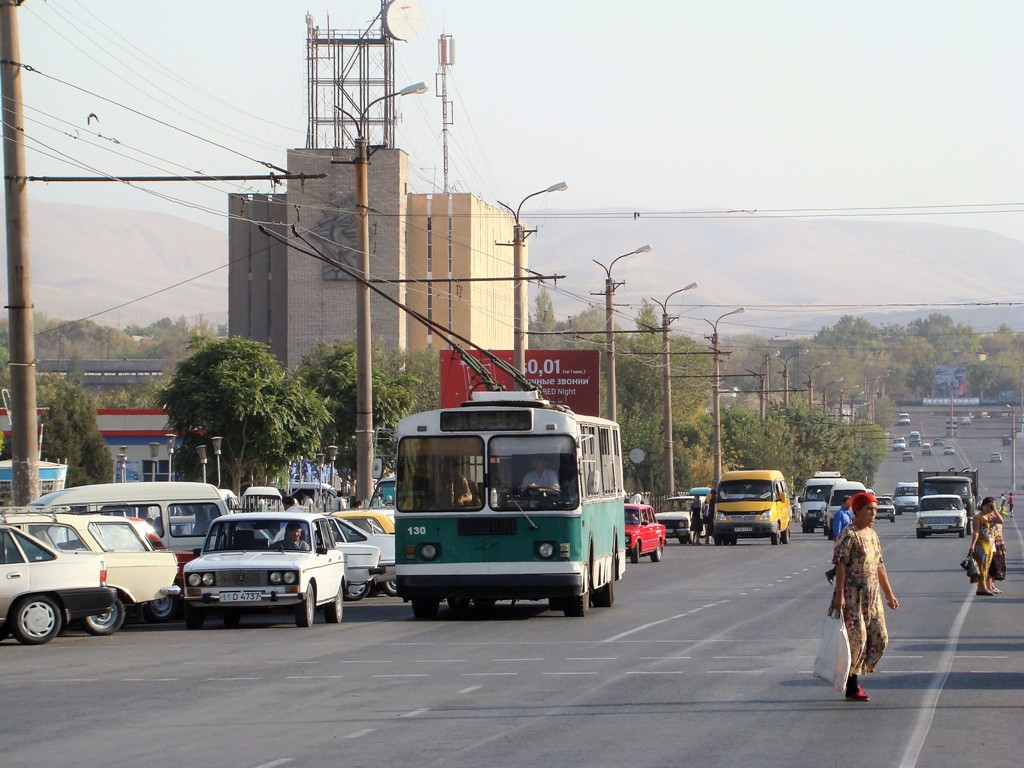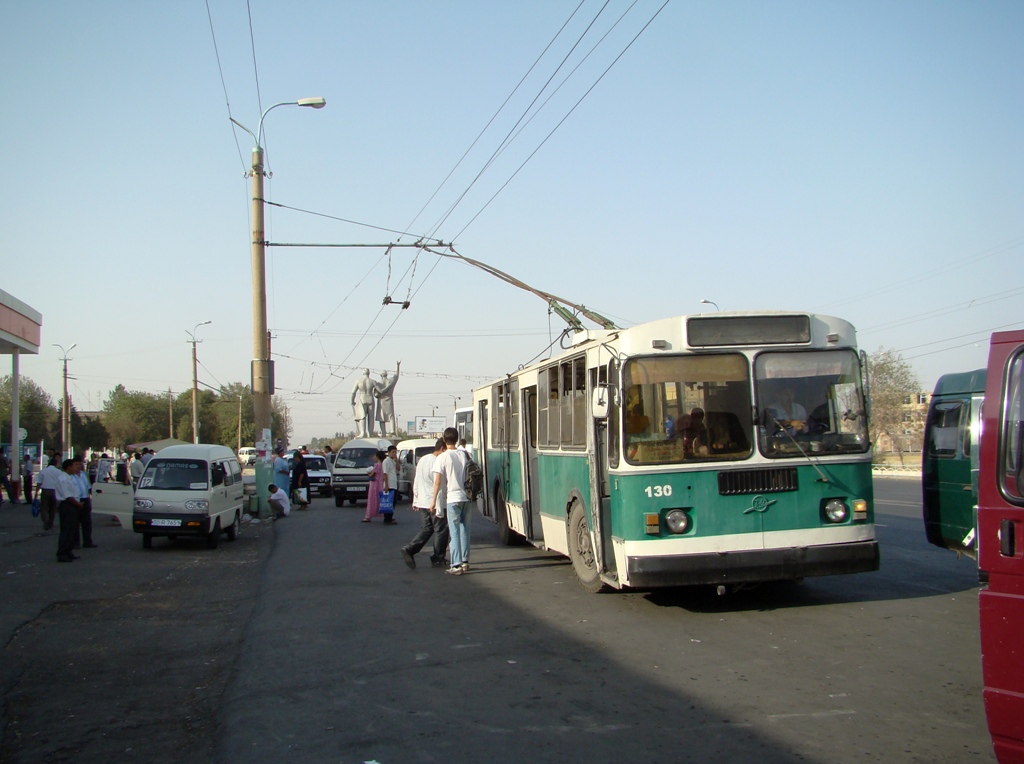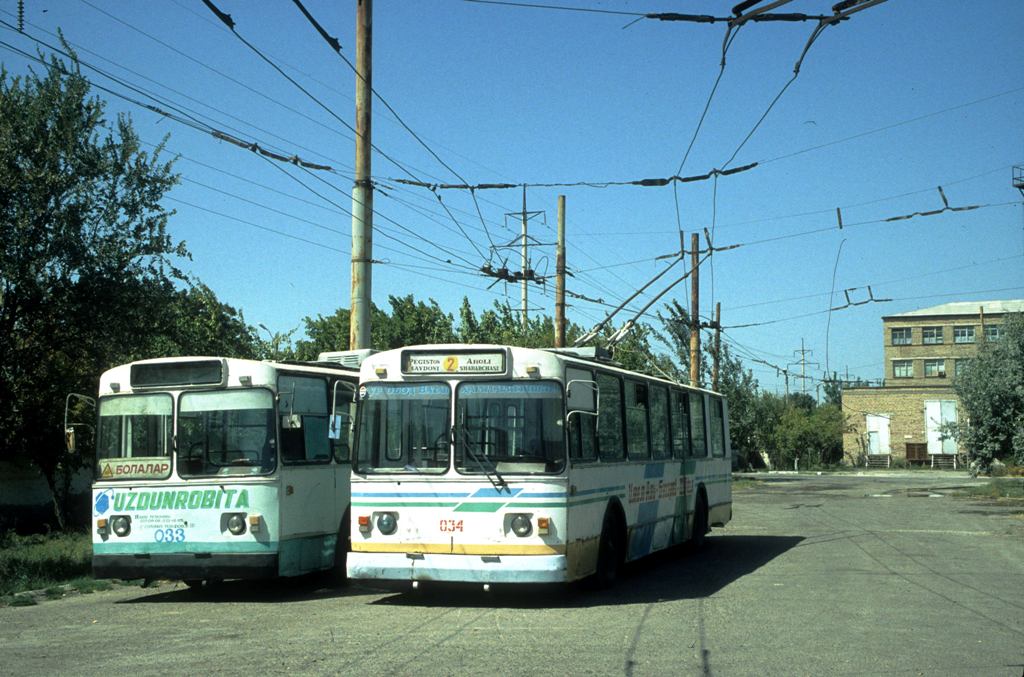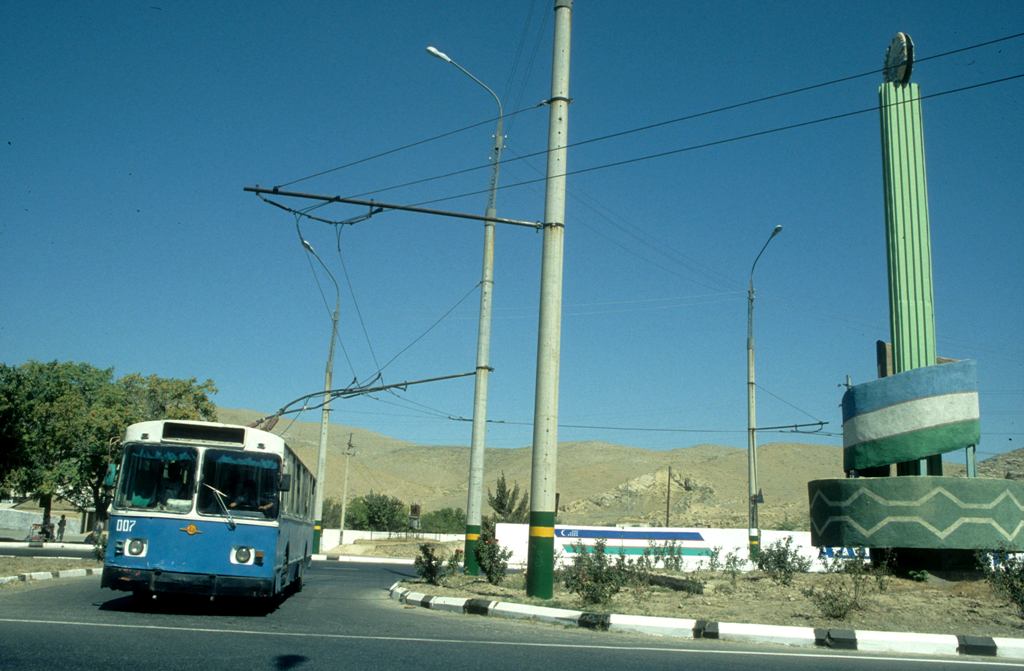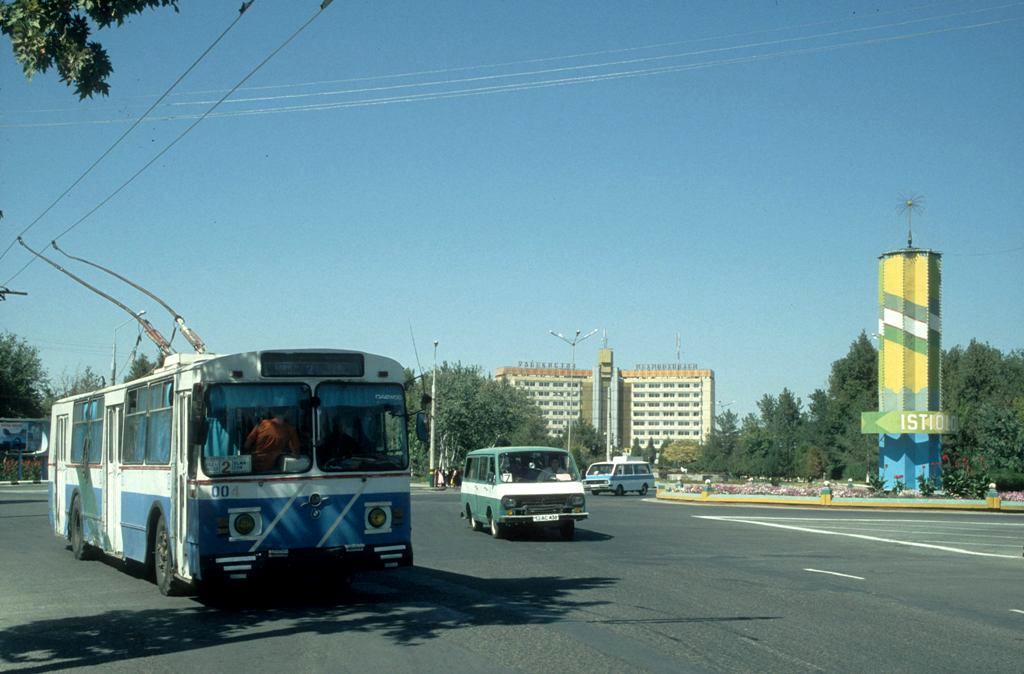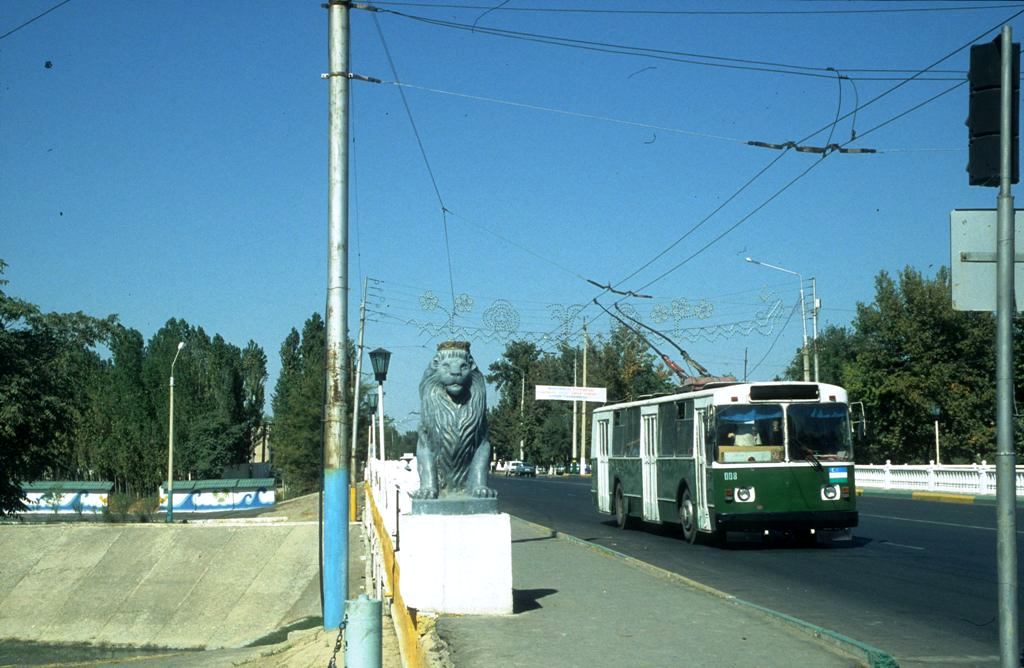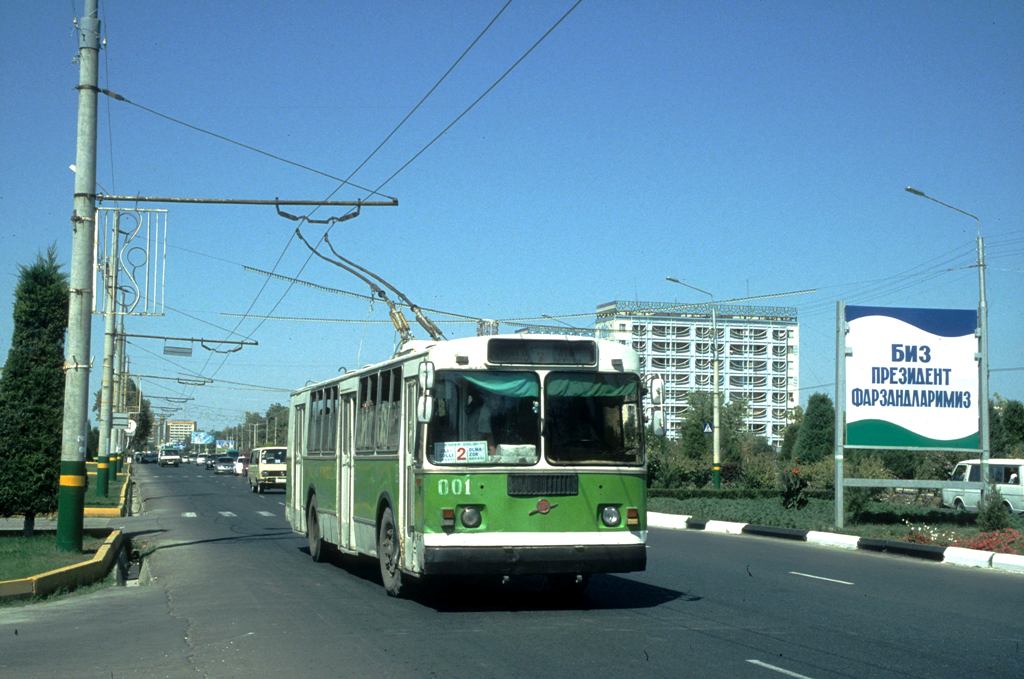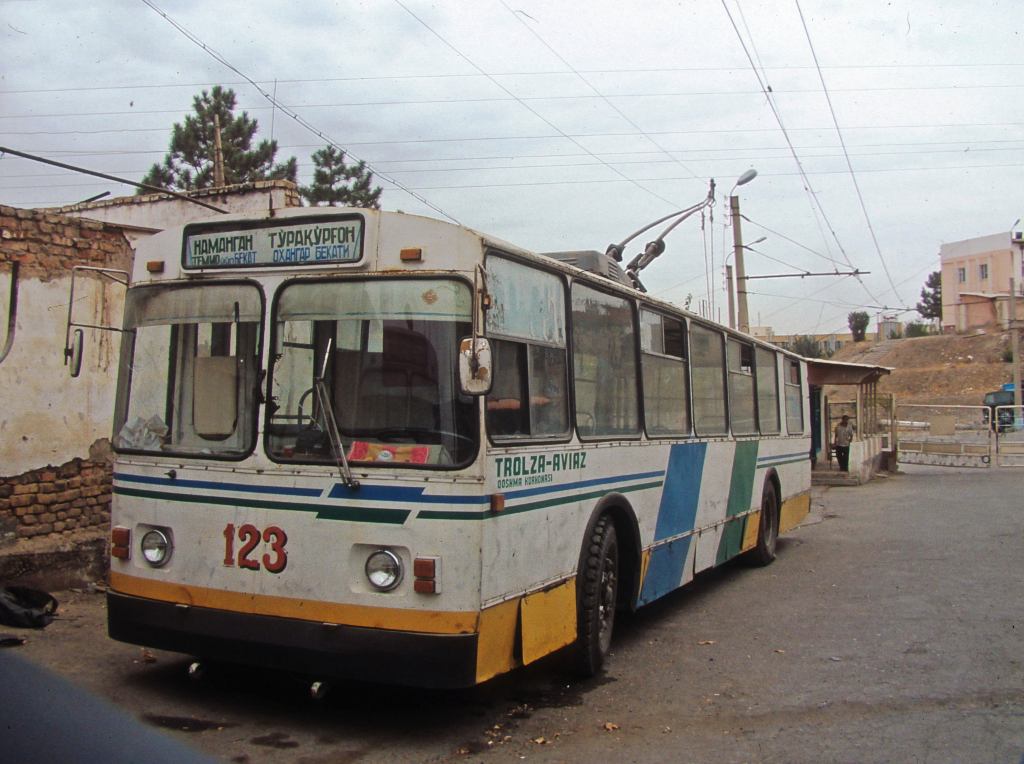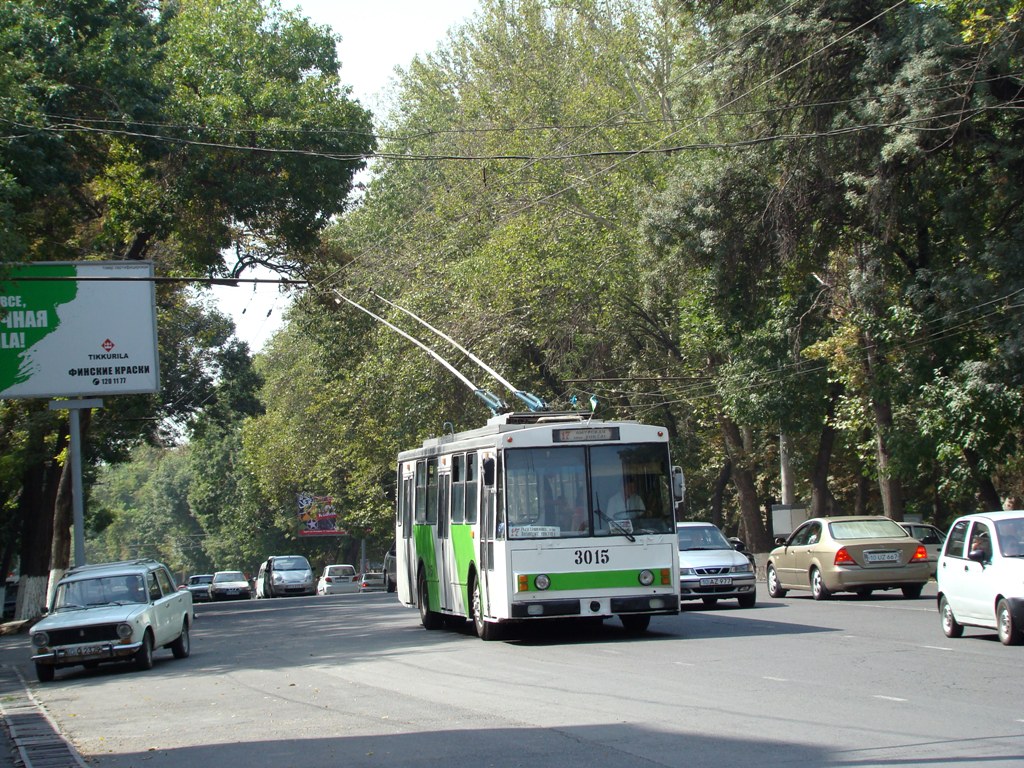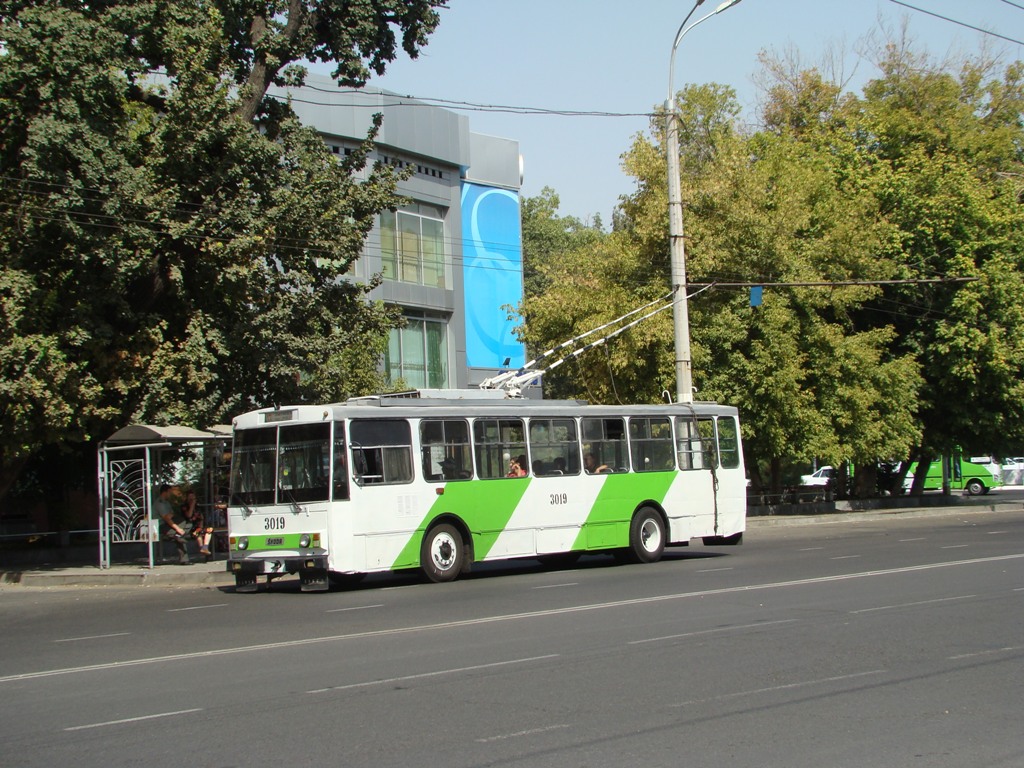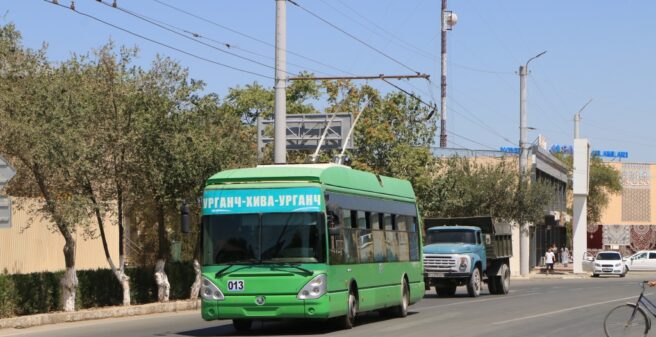
Today, trolleybus operations can usually be found in urban areas: especially here, the necessary investments in fixed infrastructure can be economically justified by expected higher passenger numbers. Thus, nearly all of the numerous interurban trolleybus lines have been gradually abandoned over time.
A notable exception is to be found in Central Asia, in the western part of the country Uzbekistan. For 25 years, a trolleybus line of about 33 km has connected the largest city in the region, Urgench, with Chiva (Xiva) – the old oasis along the Silk Road, which with its spectacular buildings and fortifications is a UNESCO World Heritage Site and attracts many tourists from all over the world.
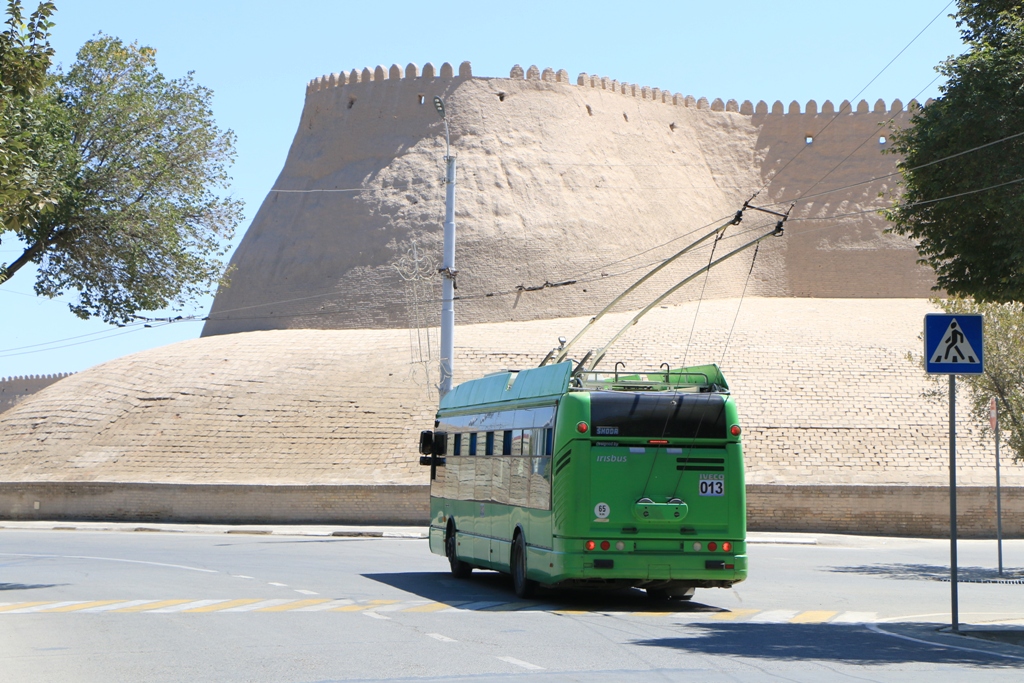
The background
Tourism was one of the main reasons for building the line in the first place: Visitors should be able to reach Chiva easily, so the line initially served the railway station and airport in Urgench and both the north and west gates in Chiva as entrance portals to the historic old town. In Urgench, there has also been an inner-city line on the station-airport axis for a few years since the opening of electric service on 20 October 1997.
In the course of time, however, the trolley bus’ remit has changed significantly. Today, tourists mainly prefer other means of transport, but the line is still relevant for the local population. The terminus in Urgench is now the region’s central market, which is very busy throughout the day. The railway station and airport have not been served for 15 years. At the other end, in Chiva, the trolleybus runs a large loop over several streets, at the end of which there is always a 5-8 minute stop at the market there. In this way, the trolleybus tries to attract the attention of as many potential passengers as possible and to “snatch” them away from the concurrent minibuses. The drivers of the minibuses attract attention by shouting loudly – a very pintoresque scenario.
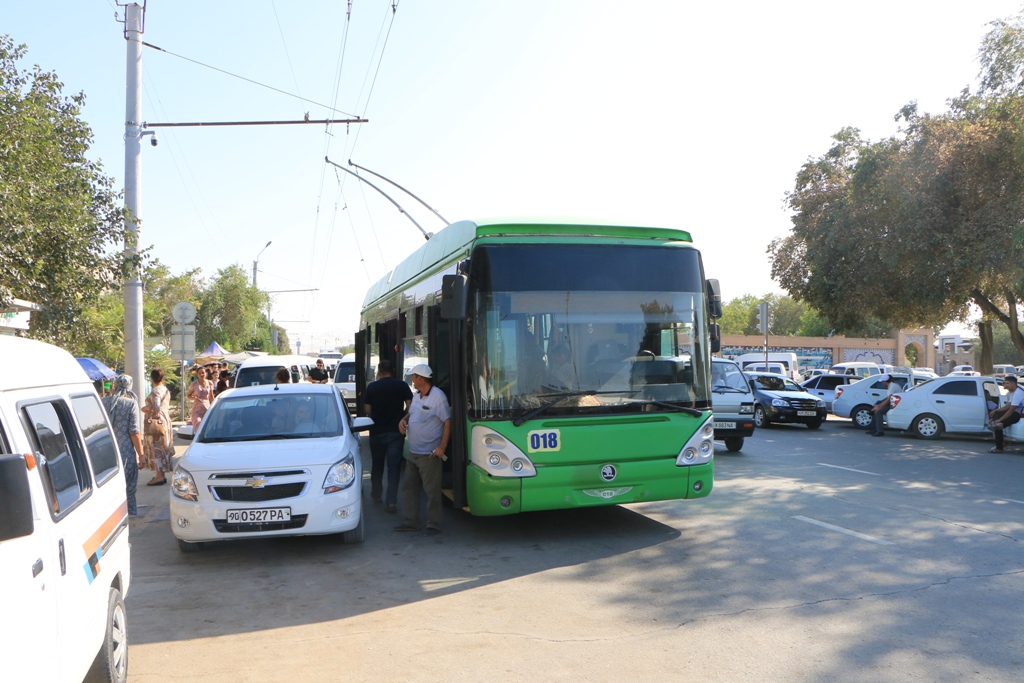

The fact that the trolleybus in Urgench has survived until today and thus represents the second longest trolleybus connection in the world can be called a small miracle. Although central government regulations in the 1990s strongly promoted the development of trolleybus systems in the country due to energy policy considerations and the number of operations increased to a total of 10 (+ 2 additional new intercity connections), a rethinking of the nationwide transport policy led to the abandonment of almost all systems only a few years later. Several projects which had already been started were even abandoned again, although considerable construction work had already been done in some cases. Urgench has been the only surviving plant in Uzbekistan since 2010. And after the first generation of vehicles was due for renewal almost 10 years ago, it was even decided locally to replace them completely with modern low-floor vehicles. However, the construction of a completely new urban line in Urgench, which was to be built further to the north-east beyond the existing depot feeder line, was not completed. A short section of this extension can still be seen today. In contrast, all other unused catenary sections were gradually removed in recent years.
The operation today
Currently, the operation is quite simple: On all days, 7-8 trolleybuses serve the route every 20 minutes, from about 6.30 am to 6.30 pm. The trolleybuses stop at permanently marked stops, but also every now and then on call on free routes – again a concession to the competing minibuses.
The interurban route runs mostly dead straight along a comparatively well-built, four-lane road; here the vehicles reach speeds of 65-70 km/h as planned. The catenary system no longer has any points; at the depot, the poles have to be re-hung by hand. The depot itself is reached via a roughly 3 km long access track. Five cars of the original Skoda equipment from 1997/99 have been parked here for years, cars 002, 004, 006 of type 14 Tr and cars 008 and 009 of type 14 TrM. They had been stored for the commissioning of the new city line, but are now in a rather dilapidated condition.
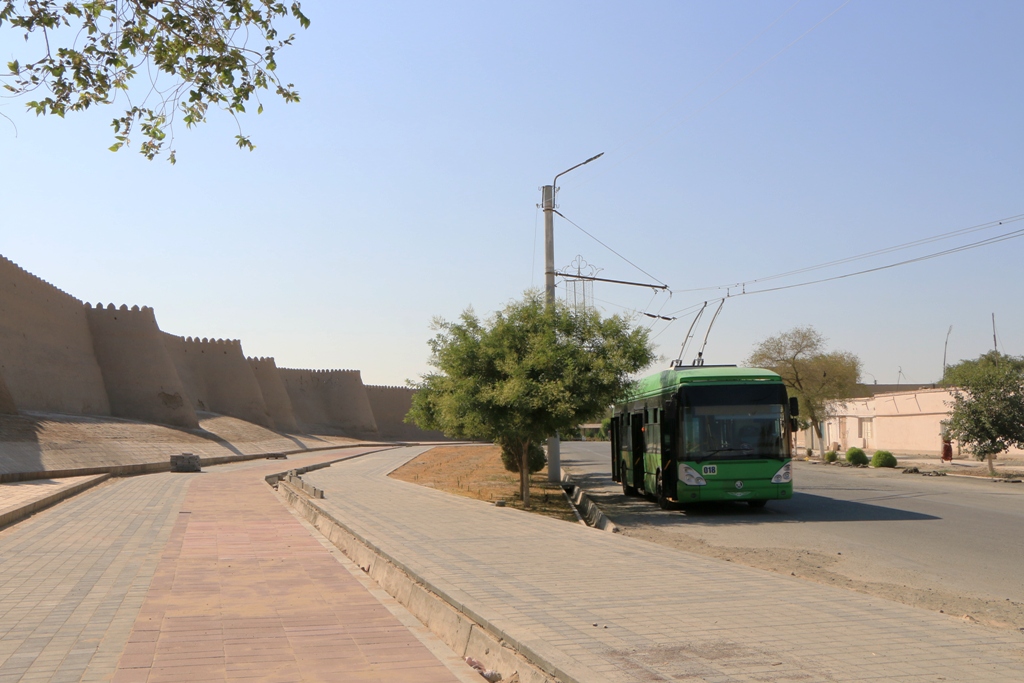
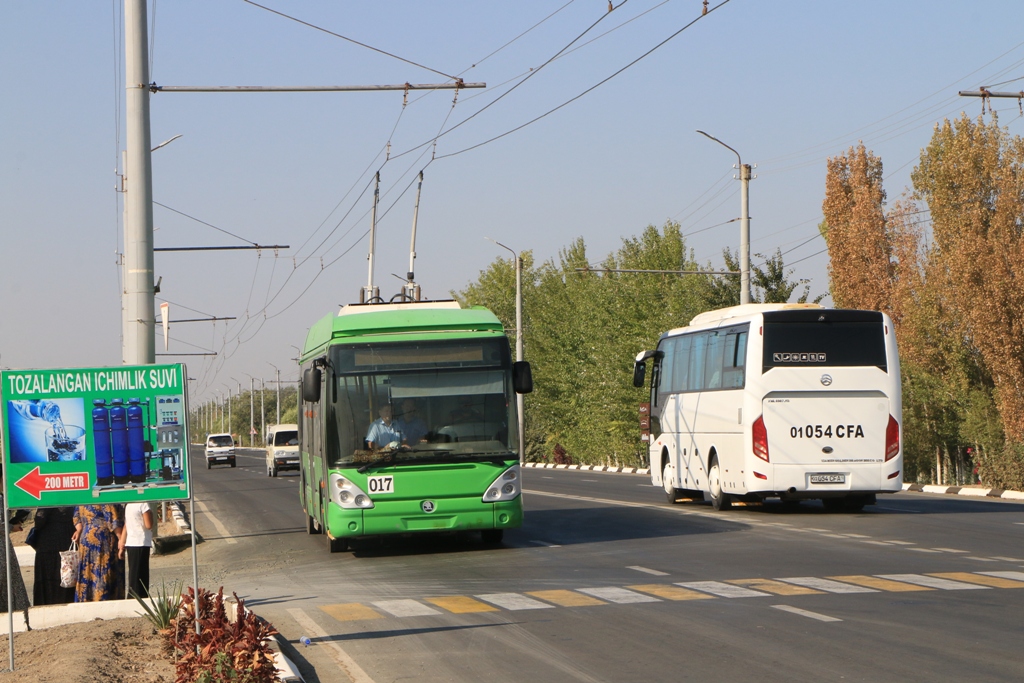

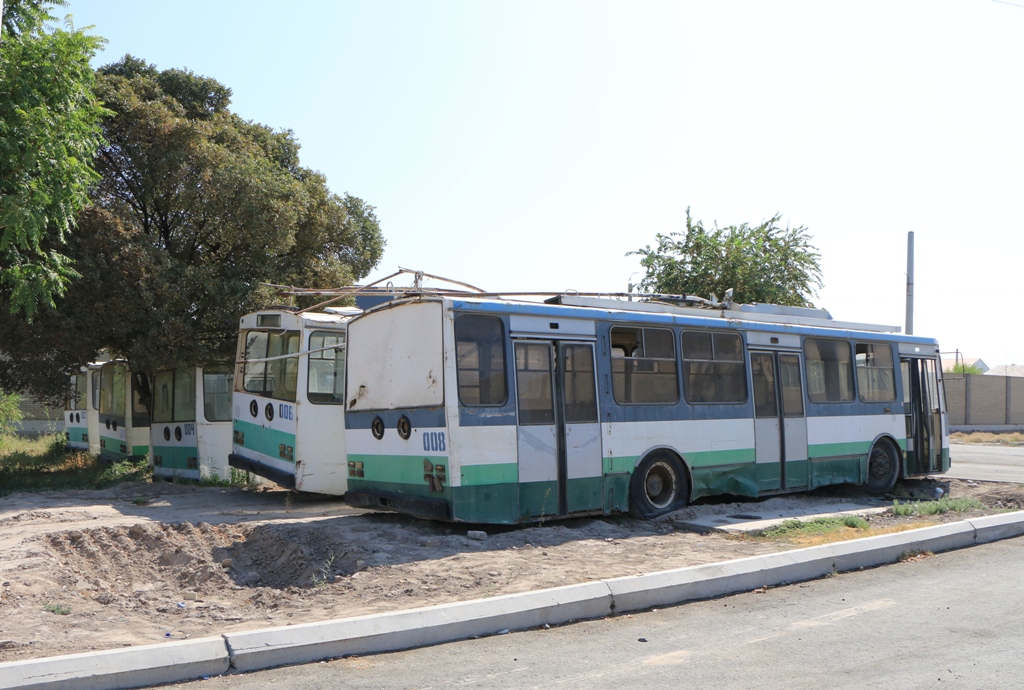
Ready for use are the nine cars 010 – 018, which Skoda Electric delivered to Uzbekistan in 2013 with bodies from IVECO. They have no auxiliary drive, so they can only be moved under overhead line. The wagons have proven themselves very well, although the supply of spare parts requires some improvisation talent on the part of the workshop.
All coaches are equipped with curtains against the strong sunlight in the desert country of Uzbekistan and are in comparatively good condition. The front section is different, some of the trolleybuses have a digital display, others have a large sign stuck on them indicating the route. All trolleybuses are manned by conductors, and the fare collected when alighting is the national standard fare of currently 1,400 Som (0.13 EUR). Due to the Corona pandemic, there were also restrictions here, and a lack of electricity supplies even led to a three-month interruption of the entire service in the winter of 2021/22, but since March 2022, the trolleybuses have been operating the line again.
Let us wish the environmentally friendly, quiet trolleybus operation a long future!

Table: Trolleybus operations in the country:
Tashkent 1947 – 2010
Samarkand 1957 – 2005
Almalyk 1967 – 2009
Andijan 1970 – 2002
Ferghana 1971 – 2003
Namangan 1973 – 2008
Bukhara 1987 – 2005
Nukus 1991 – 2007
Jizzax 1997 – 2010
Urgench-Chiva seit 1997
Note: The actual closure of operations may be before these official closure dates.
Aus der Vergangenheit der Trolleybusbetriebe in Usbekistan:
